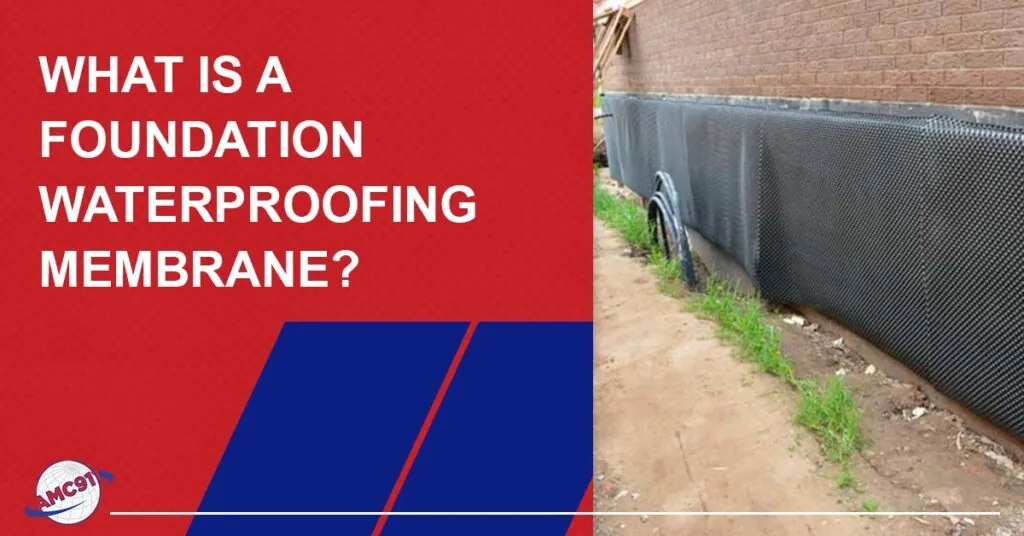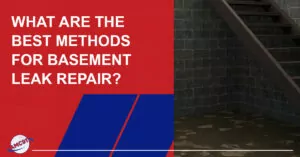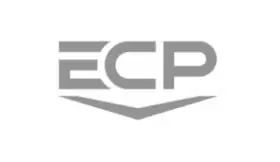Wondering what a waterproofing membrane is? If so, you’ve landed on the right page because that’s what we’re going to review in this article. We’ll go over what waterproofing membranes are, their various types, why you might need one, and more.
What Is A Waterproofing Membrane?
A waterproofing membrane is a specialized material or layer applied to surfaces or structures to prevent water ingress, which can cause damage.
Waterproofing membranes are designed to be highly water-resistant, making them ideal for use in applications where leakages could have catastrophic consequences.
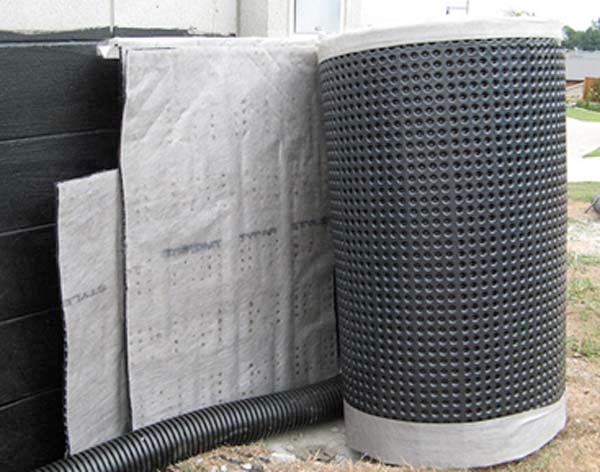
Waterproofing membranes are commonly used in various construction projects, especially below-grade structures such as basements, tunnels, and parking garages. They’re also frequently used in roofs, pools, and other areas prone to water penetration and require protection against moisture.
Several types of waterproofing membranes are available in the market, including bituminous, EPDM, PVC, TPO, and liquid coatings. Each of these materials has unique properties, advantages, and limitations, making choosing the right membrane type for a particular application crucial.
For example, bituminous membranes consist of modified bitumen layers that can be torch-applied or self-adhered to surfaces, providing excellent waterproofing performance and durability. On the other hand, EPDM membranes are highly flexible synthetic rubber materials that can be installed in large sheets, making them practical for complex roofing projects.
Overall, waterproofing membrane technology has come a long way over the years, and membranes today are more robust, efficient, and long-lasting than ever before. Proper installation and maintenance are critical to ensuring the longevity and effectiveness of these products, making them a reliable and cost-effective solution for a wide range of waterproofing needs.
How Do Basements Get Wet?
Because they’re below ground level, basements are prone to water infiltration. Here are some common ways basements become wet:
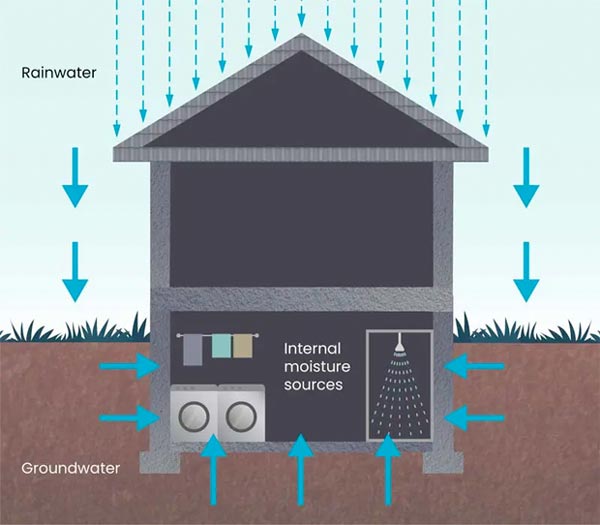
- Groundwater infiltration – When the soil around a home becomes saturated with water that can’t drain off, moisture can seep through invisible and visible cracks in foundation walls and enter the basement. Heavy rainfall and poor drainage can contribute to excess moisture in the ground around the foundation.
- Condensation – Another cause of wet basements is condensation. When warm, moist air flows in through open windows and comes into contact with cool surfaces such as a concrete wall or floor, condensation occurs, leading to dampness and mold growth.
It’s essential to address a wet basement as soon as possible to prevent foundation issues and potential health hazards from mold growth. Proper grading and installing a reliable drainage system are two ways homeowners can help prevent a wet basement. We’ll talk more about effective foundation waterproofing techniques in just a bit.
What Are The Different Types Of Waterproofing Membranes?
There are different types of waterproofing membranes, each with unique pros and cons.
Above-grade vs. below-grade waterproofing membranes
An above-grade waterproofing membrane protects that part of the structure above ground – exterior walls, roofs, etc. – from water infiltration. In contrast, a below-grade waterproofing membrane protects the foundation from moisture.
Waterproofing membranes come in sheets, rolls, and liquid
Waterproofing membranes in sheets and rolls are either self-adhered (“peel and stick”) or adhered to the chosen surface using a bonding agent. Liquid waterproofing membranes are sprayed or rolled onto the surface and then allowed to cure. There are even waterproofing membranes that are injected into foundation walls.
Where Are Waterproofing Membranes Applied?
Waterproofing membranes are either applied to the exterior or interior of the building.
Waterproofing membranes applied to the exterior of the building
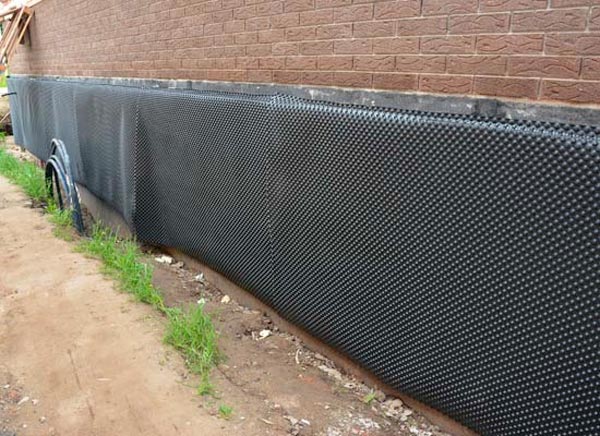
Applying the membrane to a surface facing the exterior of the building (above or below grade) is the most common and effective way of using a foundation waterproofing membrane. This method offers greater protection against water intrusion from the exterior environment and is often used during the initial construction process of a building.
One benefit of applying a waterproofing membrane to an exterior foundation wall is that it prevents water from coming into contact with the foundation wall and any reinforcing steel. However, the significant disadvantage is that accessing the exterior of a foundation wall in an existing building means excavation and removal of landscaping.
Waterproofing membranes applied to the interior of the building
Other types of waterproofing membranes are applied to a surface facing the interior of the building. This approach is often used when it’s not feasible to apply the membrane to the exterior of the building. Applying a waterproofing membrane to an interior surface offers a lower level of protection, and water seepage is possible over time. Waterproofing membranes applied to interior foundation walls are usually used with other waterproofing methods.
The downside of applying a waterproofing membrane to an interior foundation wall is that it prevents water from entering the space (basement, for example) but doesn’t prevent water from entering the foundation wall.
Things Homeowners Can Do To Help Prevent Foundation Trouble
Since the most common cause of foundation problems is water, homeowners can go a long way toward preventing trouble by simply controlling groundwater around the foundation. Here are some ways to do that:
- Clean gutters regularly – Clogged gutters prevent water from flowing into the downspouts and away from the foundation. Instead, runoff could spill over the side of the gutter, pour down the side of the house, and soak the ground around the foundation.
- Use downspout extensions – Downspout extensions can also be installed to ensure runoff is directed away from the foundation and towards a suitable drainage area. These extensions are beneficial when the yard’s slope does not offer sufficient natural drainage.
- Regrade the yard around the foundation – Regrading the yard around the foundation is another effective strategy to manage groundwater. Ideally, the ground should slope gently away from the foundation at a rate of 5% or more, which allows easy drainage.
- Install a drain tile system – Installing a drain tile system is highly recommended for preventing foundation problems caused by groundwater. A drain tile system consists of perforated pipes buried around the foundation, which collect and channel water away from the foundation and towards a drainage area. This system can be installed on the exterior or interior of the foundation.
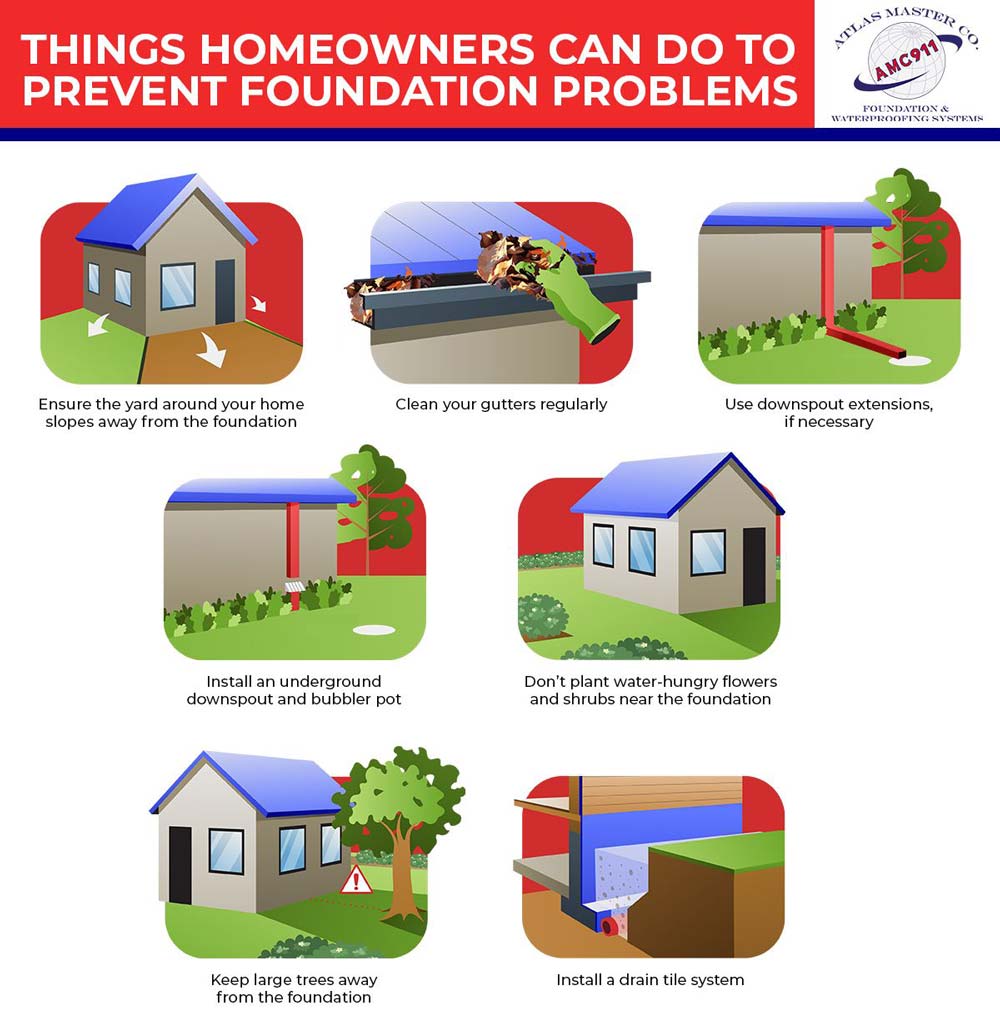
If you’re thinking about a foundation waterproofing membrane for your home or commercial property, contact AMC911 today to schedule a free evaluation.

